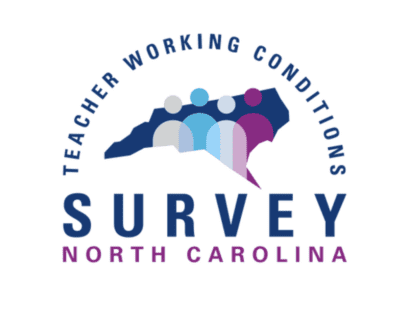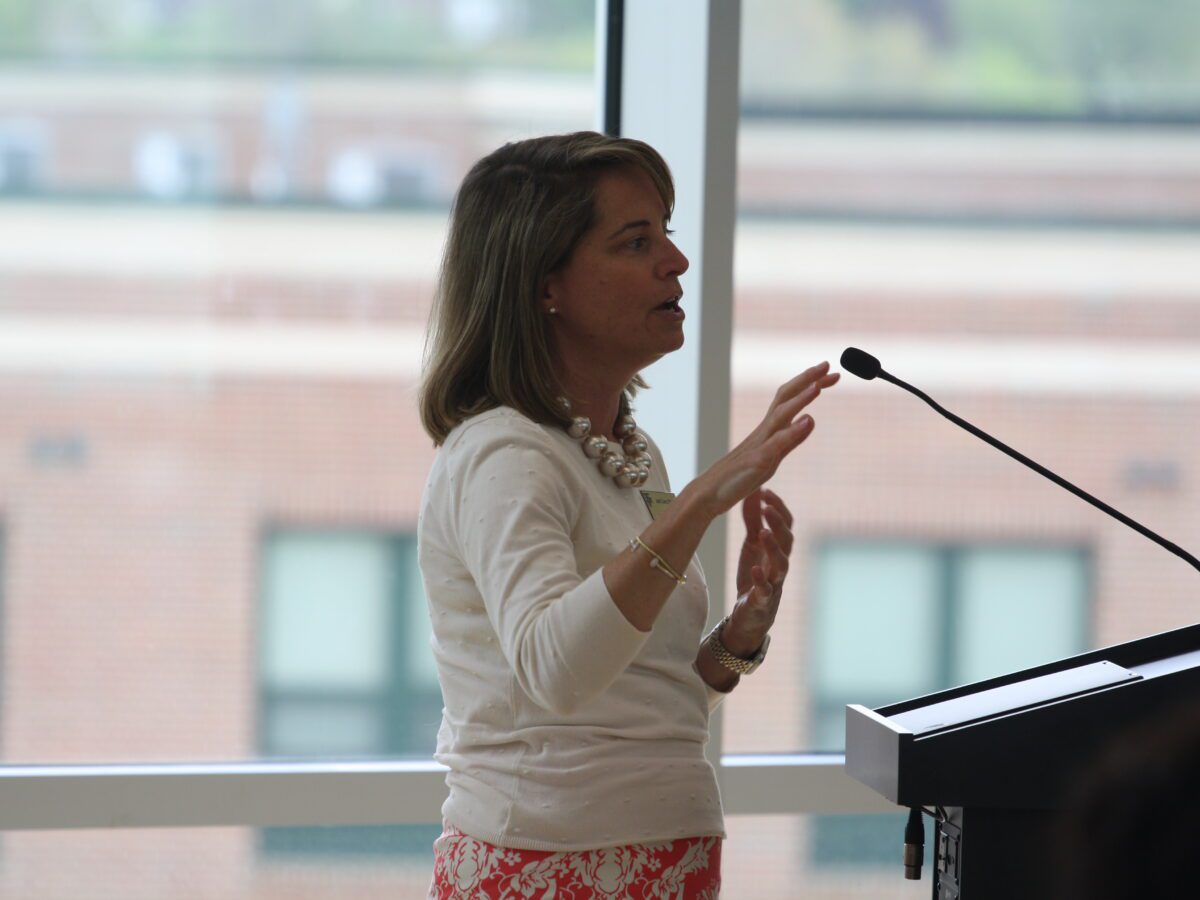
|
|
More than 100,000 North Carolina educators took the updated 2024 Teachers Working Conditions Survey, with roughly eight out of 10 respondents saying they plan to continue teaching at their current school next year.
About 12% of respondents said they plan to continue in an education role at a different school, and less than 6% said they planned to “leave education entirely or retire.”
The survey, which was open from March 1 to April 5, was sent to 119,500 educators and answered by 102,082. The Department of Public Instruction (DPI) released preliminary findings from the survey on Tuesday, with plans to release a more detailed report in October.
“If teachers take the time to give us input to fill out a survey, we absolutely have to use the data to make better decisions about what’s going on in our schools,” DPI’s Dr. Jeni Corn told the State Board of Education at its April 30 planning session in Boone.
Since 2002, DPI has administered the biennial survey to learn about how teachers feel about topics like retention, school leadership, safety and wellbeing, resources, equity, and professional development.
Corn, the director of research and evaluation in DPI’s Office of Learning Recovery and Acceleration, said DPI has heard requests from some districts to release the survey every year. She told the Board this would require asking the General Assembly for more funding.
This year’s survey included many updates, following a request by the Board to update the survey last spring. Among other things, DPI reduced the number of survey questions (from 199 to 99) and added optional demographic questions. DPI also added an open-ended question: “Is there anything else you would like to tell us about the Teacher Working Conditions at this school?”
Approximately 95% of survey respondents answered the new optional items this year, Corn said. Those items included content area, licensure status, and race/ethnicity. About 32% of respondents (32,934 people) answered the open-ended question. DPI plans to provide a qualitative analysis of those comments this summer, Corn said.
“This data makes me feel like we have this great responsibility as leaders, to both protect their anonymity but also elevate their voice,” Corn said regarding the new optional survey responses. “That is one of the things we’ll be working on over the summer — how we can drill down as far as we can to talk about and lift up their voice, while still maintaining confidentiality and making sure that nobody can identify an individual teacher.”
Here is a look at some of the themes DPI has identified so far in the open-ended question.

Who took the survey?
All classroom teachers (certified and non-certified) and licensed school-based educators (e.g., school counselor, school psychologist, social worker, media coordinator, instructional coaches, etc.) in North Carolina were invited to participate.
Of the 119,500 educators DPI invited to take the survey, about 85% filled it out.
Of the 102,082 educators who took the survey, 85% were classroom teachers (87,224) and 15% were licensed school-based educators (14,858).
The majority of respondents (59%) were experienced educators, with 11 years of experience or more. Another 25% of respondents were mid-career educators, with 4-10 years of experience. Nearly 16% were beginning teachers.
DPI’s survey results dashboard does not yet include the new optional demographics data for respondents.
This year, DPI increased the minimum response rate to 50% to send data back to a school so results are less likely to be attributed to individual respondent. Per DPI, 96% of schools met that threshold.
Retention and other survey highlights
Approximately 91% of respondents strongly agreed or agreed that “overall, my school is a good place to work and learn.”
This reflects an increase from the previous two surveys, in 2020 and 2022, at roughly 85% of respondents.
“The numbers here I think are amazing and should be celebrated,” Corn said. “The work (principals and superintendents) are doing… is making an enormous difference for your staff.”
“To ensure that we provide the right support, it is vital that North Carolina’s educators have ample opportunity to have their voices heard. I’m grateful to the educators who took the time to complete this survey and share their experiences, and I am thrilled to hear that the majority of teachers feel so positively about their schools.”
State Superintendent Catherine Truitt
Here is a look at the other retention questions in the survey.
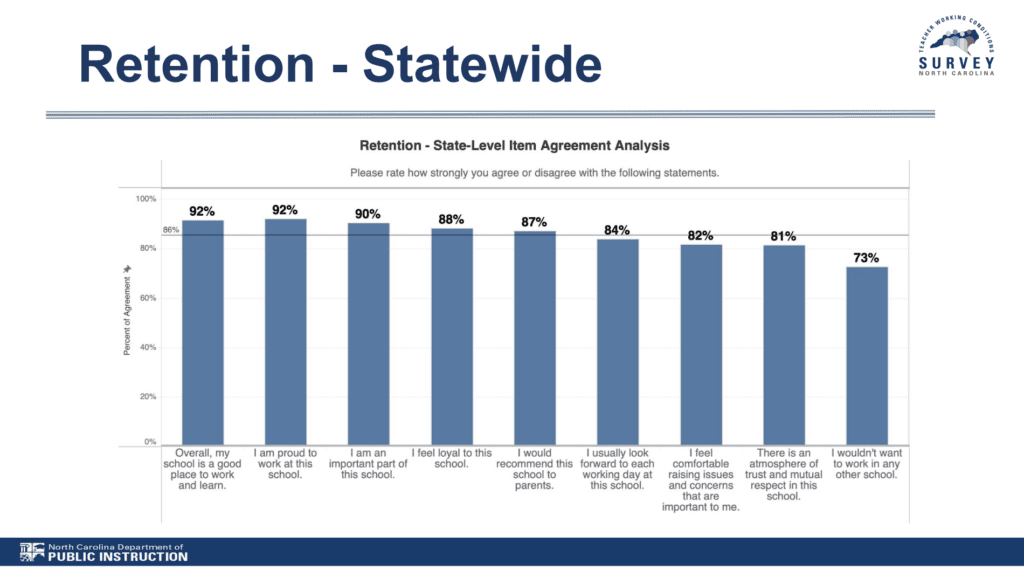
About 88% of respondents said they plan to remain teaching in North Carolina. Just 1% of respondents said they plan to continue teaching in a different state.
According to DPI, “the highest rates of agreement pertained to items related to instructional practices and support, which focuses on data and support available to teachers to improve instruction and student learning.”
DPI’s press release said the widest range of agreement in responses was related to student conduct.
About 68% of respondents said students follow student conduct rules, while nearly 31% disagreed or strongly disagreed with that statement.
Respondents most frequently identified the following conduct as issues at their school:
- Student disrespect of teacher (63%)
- Disorder in common areas such as hallways or cafeterias (60%)
- Tardiness or skipping class (57%)
Respondents also cited low rates of student possession of weapons (10%) and gang activity (11%).
Board members noted the importance of leadership, as reflected in the survey.
About 91% of respondents said their school leadership “encourages teachers to use new knowledge and skills obtained through professional development.” Nearly 76% said leadership “creates a culture of trust in the building.” However, 22% of respondents disagreed or strongly disagreed with that statement.
About 83% of respondents said school leadership make decisions based on the best interests of students.
Regarding teacher leaders, the vast majority of respondents said teachers leaders empower students and “establish a safe and orderly environment,” at 92% and 91%, respectively.
You can view DPI’s presentation on preliminary survey results here.
Professional development, time, and facilities
Some of the lower agreement rates in the survey were regarding professional development opportunities, time, and school facilities.
About 82% of respondents said “an appropriate amount of time is provided for professional development,” but only 65% said “professional development is differentiated to meet the individual needs of teachers.”
A lower share of respondents agreed or strongly agreed they had sufficient time to do their job. As you can see below, 73% said they are able to educate students with minimal interruptions, but only 57% said “the non-instructional time provided for teachers is sufficient.”
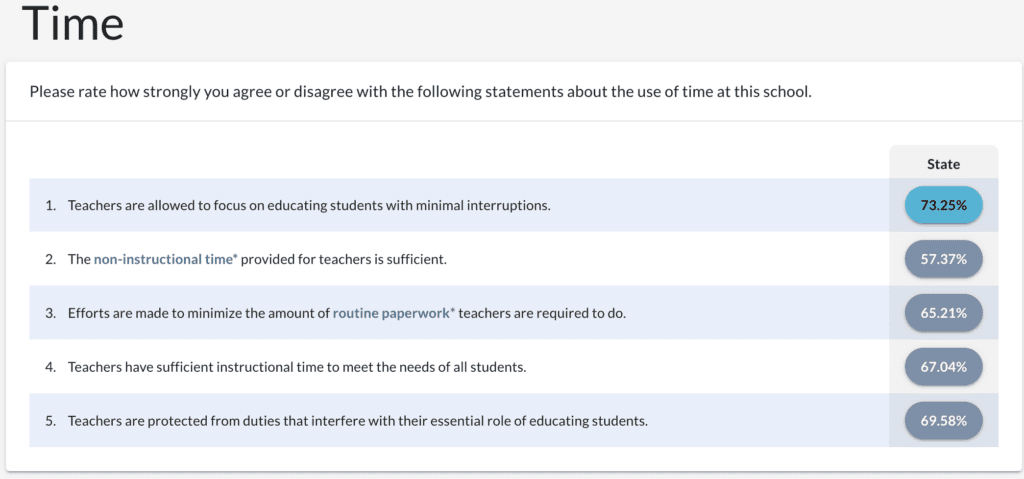
Regarding facilities and resources, 71% of respondents said building comfort (e.g., size of classrooms; temperature; building layout) is “sufficient for quality instruction.” About 74% said the same regarding building maintenance (e.g., lead, asbestos, pest control).
Notably, 65% of respondents said “students arrive at school with their basic needs met (e.g. school supplies, clean clothes, food, sleep).” More than 30% of respondents disagreed or strongly disagreed with that statement.
What’s next?
This summer, DPI is expected to release updated dashboards and reports of the survey results and begin qualitative analysis of open-ended comments.
Here are some of the elements included in those dashboard, per DPI’s report:
- Results broken out by educator and school characteristics.
- Correlations with student learning outcomes.
- Response patterns within and across domains.
- Comparison of responses over time (24 items).
- Validity and reliability analysis of revised survey.
- Peer district comparisons.
In October, DPI will present a full technical report to the Board. In January 2025, DPI will “bring proposed plan for future deployment” to the Board, to then make a request to the General Assembly.
At Tuesday’s planning session, Board members discussed regional survey data with DPI staff. You can view some of the preliminary results by region in the Board’s meeting packet.
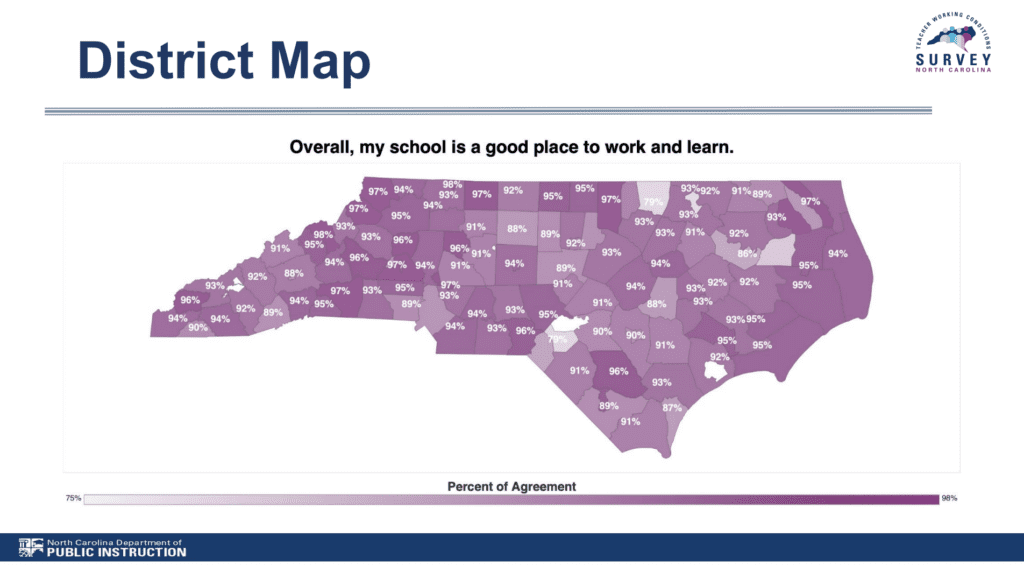
In addition to sharing survey results with teachers, Corn said school and district leaders should provide targeted professional, instructional supports, and resource allocation — using survey data from their district/school.
DPI will also work schools and districts to implement survey results in future school improvement plans and strategic plans.
Corn also encouraged leaders to share survey data with local school boards, elected officials, and the community “to advocate for your teachers and our public schools.”






